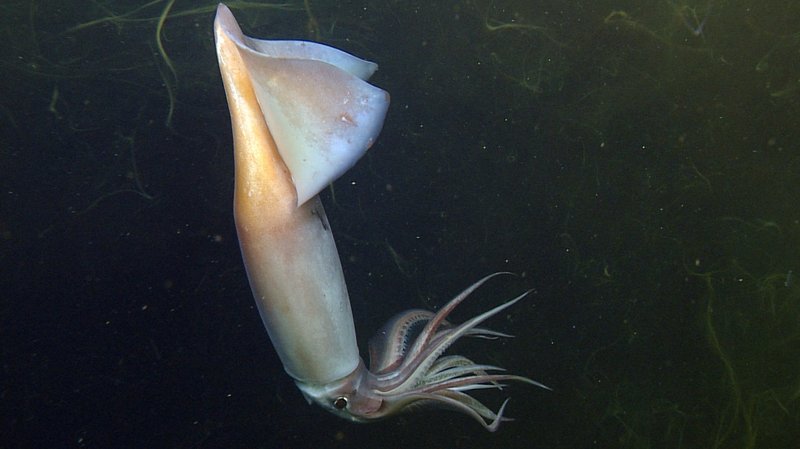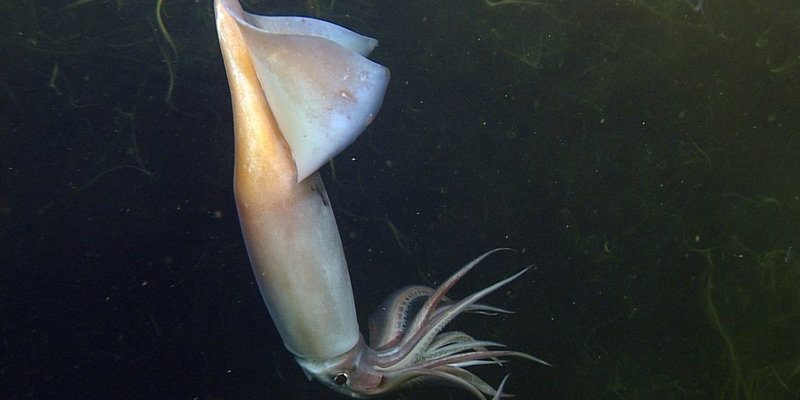
Imagine a world where your skin can change colors with your emotions or surroundings. In a way, that’s what a squid does! But it’s not just about looking pretty; these abilities serve practical purposes, making squids effective hunters and social creatures. So, let’s dive deeper into how squids navigate their watery homes and the intriguing ways they communicate.
The Squid’s Unique Anatomy
One of the first things to understand about squids is their unique anatomy, which plays a crucial role in their navigation and communication. Squids belong to a group of animals known as cephalopods, which also includes octopuses and cuttlefish. They have a soft body, large eyes, and eight arms lined with suckers, plus a pair of longer tentacles. But it’s their fin and jet propulsion system that truly sets them apart.
The fins of a squid are located on either side of its mantle, allowing it to steer as it swims. Think of these fins like the wings of a bird; they help the squid maneuver through the water, adjusting direction and speed quickly when needed. If speed is essential—like when escaping a predator—the squid can rely on its jet propulsion system. By forcibly expelling water from its body, it can shoot forward rapidly, making a quick getaway.
Jet Propulsion in Action
You might be curious about how this jet propulsion works. When a squid wants to move quickly, it contracts its muscular mantle, pushing water out of a siphon (a tube-like structure). This action propels the squid forward, much like how a balloon zips across the room when you let it go. This powerful movement lets squids respond quickly to threats or opportunities.
The combination of fins and jet propulsion makes squids highly agile in the water. They can dart in any direction, spin around, and even hover in place. This agility is vital for both hunting prey and evading predators, making squids efficient hunters in the marine food web.
Color Change: The Communication Tool
Now let’s talk about one of the squid’s most remarkable features: its ability to change color. This isn’t just for camouflage; it’s a critical part of how squids communicate with each other and their environment. Squids have special cells in their skin called chromatophores, which contain pigments. By expanding or contracting these cells, squids can change their appearance almost instantly.
When a squid is feeling threatened, it might turn dark to blend in with its surroundings. On the other hand, if it’s excited or trying to attract a mate, it might display bright, flashy colors. This ability to flash colors not only helps squids communicate but also sends signals to other sea creatures about their mood or intentions.
Examples of Communication
You’re probably wondering how this plays out in real life. Imagine a male squid trying to impress a female. He might display vibrant colors and patterns to showcase his health and vitality. Conversely, if two male squids encounter each other, they might display aggressive colors to assert dominance.
In a way, you could think of their colors as a sort of “squid language.” It’s not just about what they say; it’s also about how they say it. These color changes are often accompanied by body language—like arm movements—enhancing their ability to communicate. Just like humans use tone and body language in conversation, squids use their entire bodies.
Using Jet Streams for Navigation
When it comes to navigating their underwater world, squids also rely on sophisticated sensory systems. They have excellent vision, thanks to their large eyes, which can detect movement and light in dim waters. But that’s not all—they also use the water currents and chemical cues to help them find their way around.
Imagine you’re walking in a foggy area. You’d rely on your senses, like hearing and smell, to guide you. Squids do something similar. They can pick up on chemical signals in the water that indicate the presence of food or other squids. This ability to sense their environment helps them navigate through complex terrains, from rocky sea beds to open waters.
Relying on Memory
Interestingly, squids also have the ability to learn from their experiences and remember certain locations. Research shows that squids can remember where they’ve found food and navigate back to those spots later. It’s like how we remember where our favorite coffee shop is located; it all comes down to a mix of instinct and learning.
This memory allows squids to be strategic hunters, returning to the best spots at the right times. It shows that their navigation skills are more than just instinct—they are also a product of intelligent behavior.
Adapting to Their Environment
Squids are incredibly adaptable creatures. They thrive in various habitats—from shallow coastal waters to the deep sea. This adaptability affects how they navigate and communicate in different environments. For instance, in deeper waters where light is scarce, squids might rely more on their other senses than their sight.
In murky waters, color change may be less effective, so they might lean on their body language with other squids. This versatility allows them to survive and flourish in diverse marine ecosystems, showcasing their remarkable intelligence and resilience.
Squids in Action
Picture a squid hunting in a coral reef. The vivid colors pop around it, but it needs to stay hidden from potential predators. It smoothly glides through the water using its fins while subtly changing its skin color to blend in with the coral. Once it spots prey, it quickly propels itself forward, ready to catch dinner.
These intelligent actions are a beautiful dance of navigation and communication, demonstrating what makes squids such captivating creatures. Their ability to adapt to their surroundings while effectively communicating with other squids is a hallmark of their success in the ocean.
In summary, squids are incredible navigators and communicators, using their unique anatomy and skills to thrive in the ocean. Through jet propulsion, color changes, and adaptability, they showcase a remarkable blend of instinct and intelligence.
So, the next time you think about a squid, remember this fascinating world below the waves—one filled with brilliant colors, agile movements, and a silent language that tells stories of survival and interaction. Squids are more than just ocean dwellers; they’re an example of nature’s creativity and complexity, teaching us about the wonders of aquatic life.

